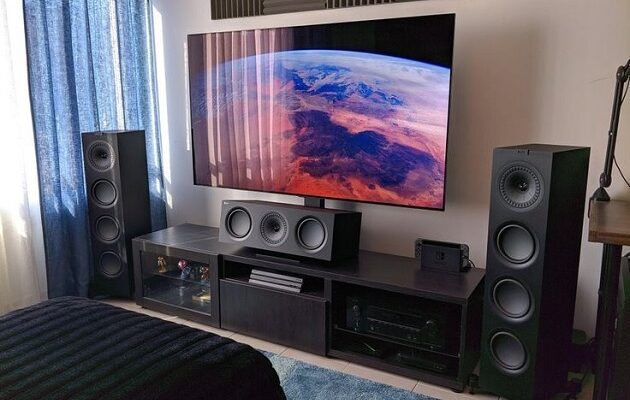Home audio systems come in a wide variety of configurations. They include everything from a single, smart speaker to a fully-fledged surround sound system that can take your breath away with the power of a high-end movie soundtrack.
Left and right speakers are crucial for creating a realistic and immersive experience, from the sonic thrill of a movie’s soundtrack to the impact of a cinematic explosion. A stereo audio video receiver or an audio amplifier usually powers them.
Table of Contents
Speakers
Speakers are the interface between an audio system’s electronics and the physical world in which sound is heard. The right set can distinguish between cramped, muddy audio and crystal-clear concert-hall sound.
Speakers transform electromagnetic waves into sound. They come in two forms – analog and digital. Analog speakers amplify the electromagnetic input to create sound waves, while digital speakers convert the digital signal into an analog form and amplify it.
The most important parts of a speaker are its drivers. The driver is what vibrates and creates the sound. Speakers have multiple drivers – usually one woofer, midrange, and a tweeter. The speaker’s driver and insulation’s size determine how loud it can be.
Larger drivers require more power to vibrate and produce high frequencies, while smaller drivers can be much easier to drive and reproduce low frequencies. The size of a driver is also impacted by its material and how it’s shaped.
A subwoofer is ideal for producing very low frequencies. The human ear doesn’t hear these sounds well, but they affect the room’s ambiance. Many home audio systems include a subwoofer. Smart home speaker systems are another option and can be controlled from a smartphone or voice-controlled device. These are best for those who want to stream music to multiple rooms.
Amplifiers
To use a home audio system like the one available with a Bose promo code, you’ll need an amplifier or a receiver to power the speakers. An amplifier increases the volume and enhances the quality of low-level signals from a source, adding richness and depth to the sound. An electronic amplifier converts alternating current, like the electricity from a wall outlet, into direct current (specifically, electrons).
It then passes the electrons through a resistor and increases the voltage on the output port. This increase in voltage results in an increase in current, which in turn creates an increase in the frequency of the sound waves produced by the speaker.
Generally, higher wattage (or power) amplifiers are not “louder,” but they may have enough gain to drive large loudspeakers without causing excessive distortion or damaging the amplifier and the speakers. This is largely a matter of speaker sensitivity and how well the amplifier matches it.
A stereo amp is a common home audio device for music listening. Still, if you want to watch movies simultaneously, an AV receiver (also called an AV stereo receiver) is a better choice because they have more features than just an amplifier. They can handle five, seven, 11, or 13 different channels and provide a connection for video data, such as from a Blu-ray player.
Receivers
A home audio system needs more than just an amplifier. It would help if you also had a receiver that functions as the central hub for your home theater. This device receives the various signals from your TV, Blu-Ray player, DVD player, Apple TV hub, and speakers and coordinates their output to different locations throughout your house. Receivers also contain a preamplifier, which helps boost the strength of low signal levels to a higher line level that speakers can easily hear.
When selecting a receiver, take inventory of all the media devices you’ll be connecting to it. You’ll need a receiver that can manage the number of input ports you have – either component or composite, which are the red, white, and yellow cables you might remember from older systems. A receiver can also include output ports for external audio amplifiers if you need more power for your speakers than the built-in amplifiers can provide.
Some receivers can be used for multi-room audio, an excellent way to fill your home with music. Look for one that can send stereo audio to multiple “zones” in your home – this means it can play the same song in a living room while you watch your favorite movie or listen to a podcast in another part of the house.
Controls
A home audio system allows you to play music and radio broadcasts throughout your house. You can enjoy soothing classical in your bedroom, talk show radio in the kitchen, and downloaded hits in the entertainment room. And you can skip songs or control the volume from anywhere in the house without picking up your phone.
A whole-home audio (WHA) system uses a central controller and multiple zones of speakers that are wired or wirelessly connected. Some systems have all sources and amplifiers built into one box. In contrast, others include a separate source (such as a smart speaker), an audio/video streamer or TV, and older tech such as CD players, tuners, and home theater receivers.
A newer and more efficient way to distribute audio is a wireless system. This includes “smart” speakers with built-in voice controls, such as Google Home and Alexa, and “soundbars.” Wireless systems allow you to create a multi-zone WHA system with impressive expandability, but they require careful planning and installation to avoid any issues.















Comments